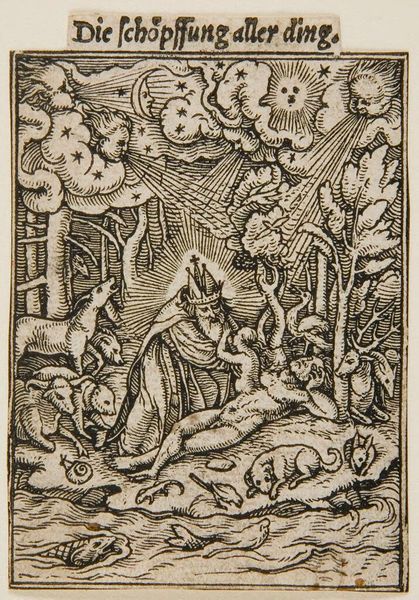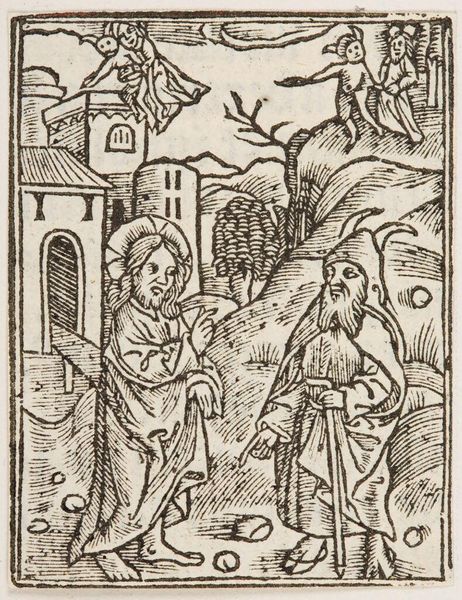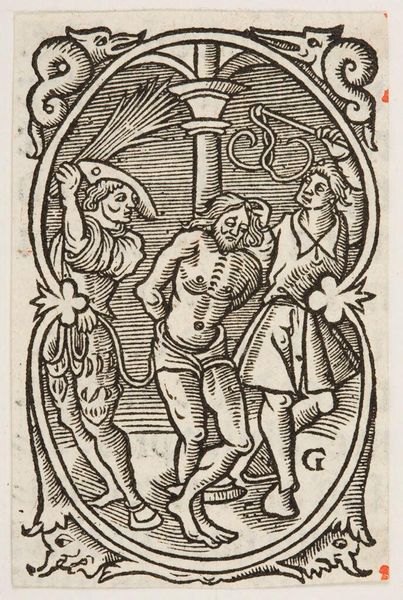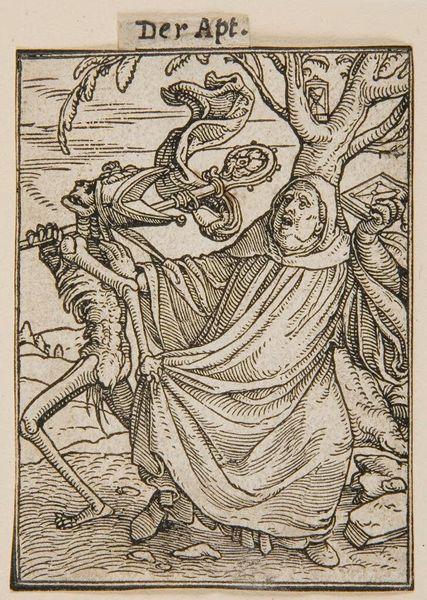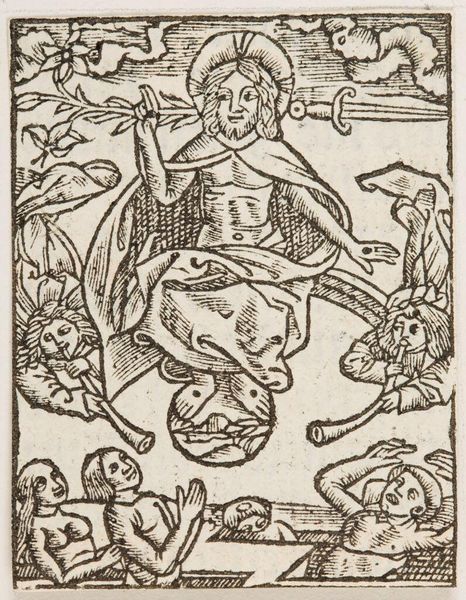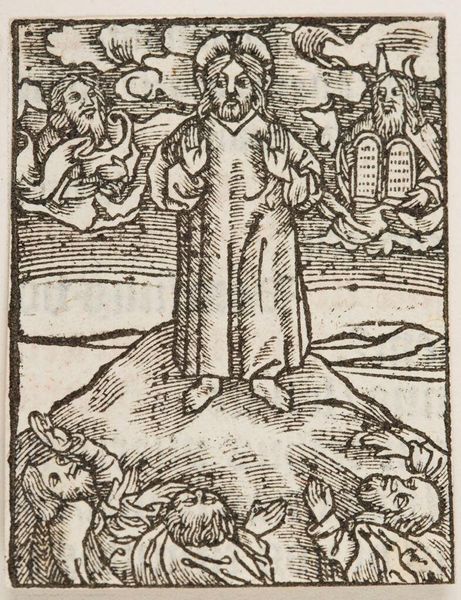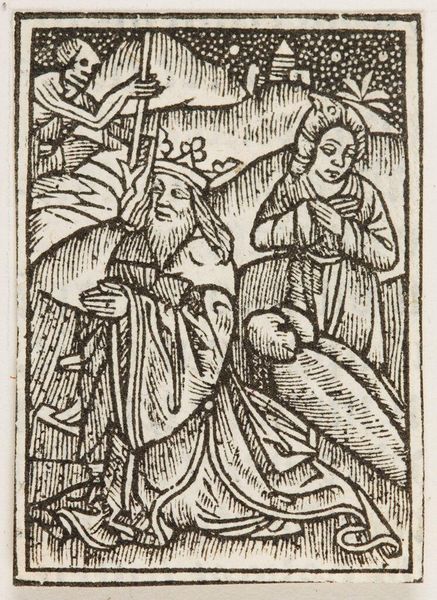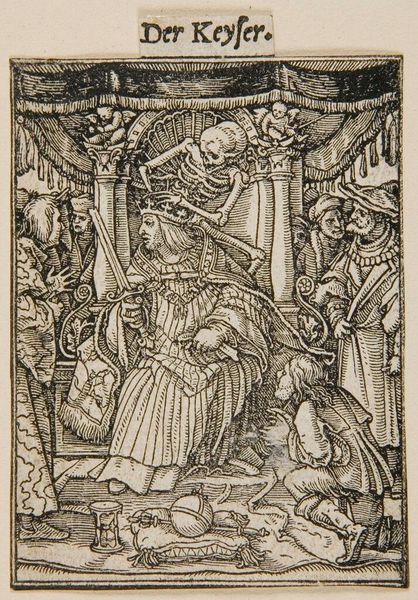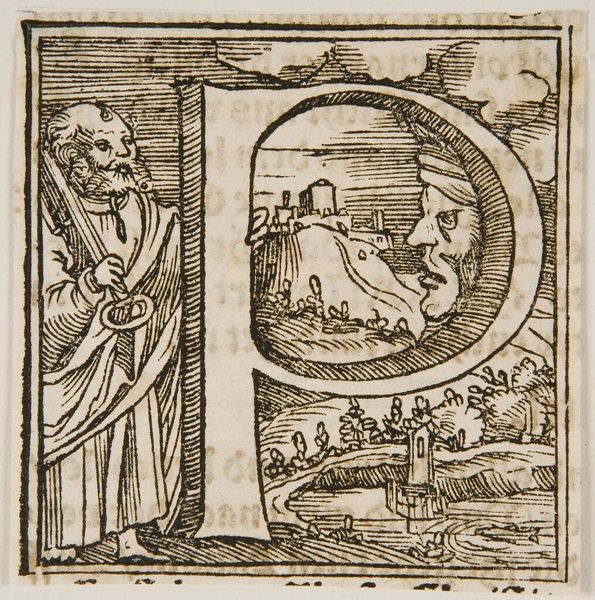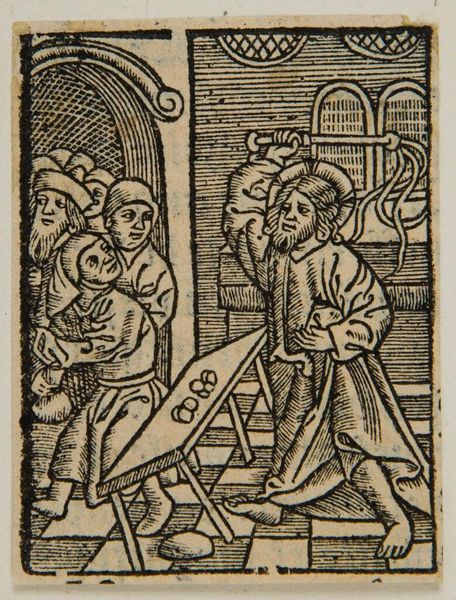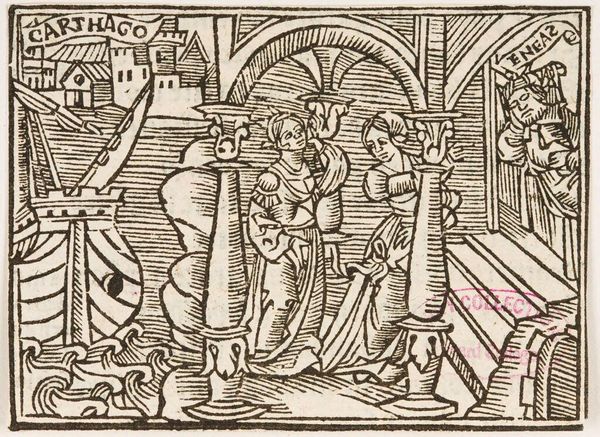
Copyright: CC0 1.0
Curator: Let’s examine Holbein the Younger’s woodcut titled "The Monk," part of his "Dance of Death" series. The starkness of the lines immediately strikes me. Editor: Absolutely. The frantic energy captured in the monk's figure, contrasted with the inexorable pull of Death, is unsettling. It's a potent allegory for mortality. Curator: Notice how the textures are achieved through varied line weights and densities. Holbein masterfully creates a sense of depth and drama using only black and white. Consider how the lines create the illusion of swirling fabric. Editor: Indeed. The inclusion of symbols like the hourglass and the crumbling architecture speak to the vanity of earthly achievements against the backdrop of death. And what about the column? It’s meant to invoke the power and structure of faith. Curator: Precisely. The composition guides our eye, forcing us to confront the monk's horror but also the inevitability represented by Death's skeletal form. There's a formal tension between the dynamic monk and the static Death. Editor: Yes, Holbein successfully distilled complex theological concepts into a highly impactful image. I find that I see the anxiety of a whole era reflected in the monk’s face. Curator: It is remarkable how this small woodcut achieves such a monumental effect. It still resonates powerfully today.
Comments
No comments
Be the first to comment and join the conversation on the ultimate creative platform.
